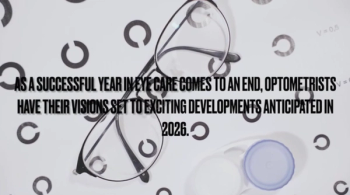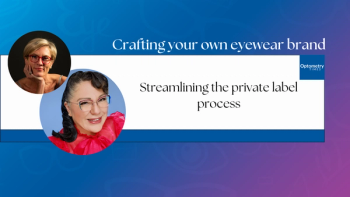
Spectral domain ophthalmic imaging is ahead of the pack
Spectral domain ophthalmic imaging is the wave of the future according to one expert.
Key Points
"Ophthalmic imaging lowers the bar," Dr. Prince said. "It makes it easier to practice at a much higher level. There have been recent advances in OCT technology. There's the original time-domain scanning (TD-OCT), and now there's the spectral domain as well."
OCT scanning resembles ultrasound using light, explained Dr. Prince, who is a clinical associate, The Wilmer Eye Institute, Johns Hopkins University School of Medicine, Baltimore. "In addition, it has slightly higher definition or resolution because the wavelength of light is slightly different."
More and more research bolsters the claim that SD-OCT is superior to TD-OCT, he said. "SD-OCT is advantageous [compared with] TD-OCT because of its high speed, its ability to provide 3D scanning areas, and its accurate segmentation of the retina layer by layer."
TD-OCT versus SD-OCT
The term "coherence" refers to the fact that when the back-reflected light of OCT is combined with a reference scan, and the conditions are right, they will interfere coherently to produce an A scan. An A scan is a perpendicular cross-sectional image at one point. Tomography refers to the histologic-like images created by combining multiple A scans to create a 2D cross-sectional image, or B scan.
A typical retinal B scan consists of 512 A scans. Because TD-OCT only acquires one A scan at a time, the maximum acquisition speed is 400 A scans/second. With SD-OCT, a spectrometer acquires multiple A scans simultaneously and the generated interference pattern undergoes Fourier transformation to break the image down into individual A scans.
The major difference between TD-OCT and SD-OCT is speed. Stratus is the only TD-OCT device on the market and produces only 400 A scans per second; SD can acquire as many as 40,000 scans per second. It's like comparing the speed of an antique car with a Concorde jet, Dr. Prince said.
"Time-domain is not, in my opinion, the best method for testing disease progression," Dr. Prince said. "With SD-OCT, it all happens very quickly. Because of the speed alone, the motion artifact is minimized. You have so many more scans, because of that fast speed, that you can actually get a 3D image with SD-OCT. With TD-OCT, you only get a 2D image."
More accurate retinal maps
Motion artifact is the most significant factor limiting image quality. As the eye moves, so does the image location. For example, TD-OCT uses six radial B scans (composed of 512 A scans each) that intersect in the macula. Each B scan takes 1.28 seconds to acquire and the scan location changes as the eye moves.
With SD-OCT, an entire rectangular raster of 128 B scans can be acquired in a fraction of the time it takes the TD-OCT to acquire just six radial scans. SD-OCT's acquisition speed of 17,000 to 40,000 A scans per second eliminates a significant portion of the motion artifact.
Further, scan density is much greater, and virtually 100% of the macular area is scanned, whereas only 5% of the macula is scanned with TD-OCT's six radial scans. Because SD-OCT acquires an entire raster of B scans, these 2D B scans are combined to produce a 3D image. TD-OCT must interpolate the area between the B scans, he explained.
Newsletter
Want more insights like this? Subscribe to Optometry Times and get clinical pearls and practice tips delivered straight to your inbox.













































.png)


